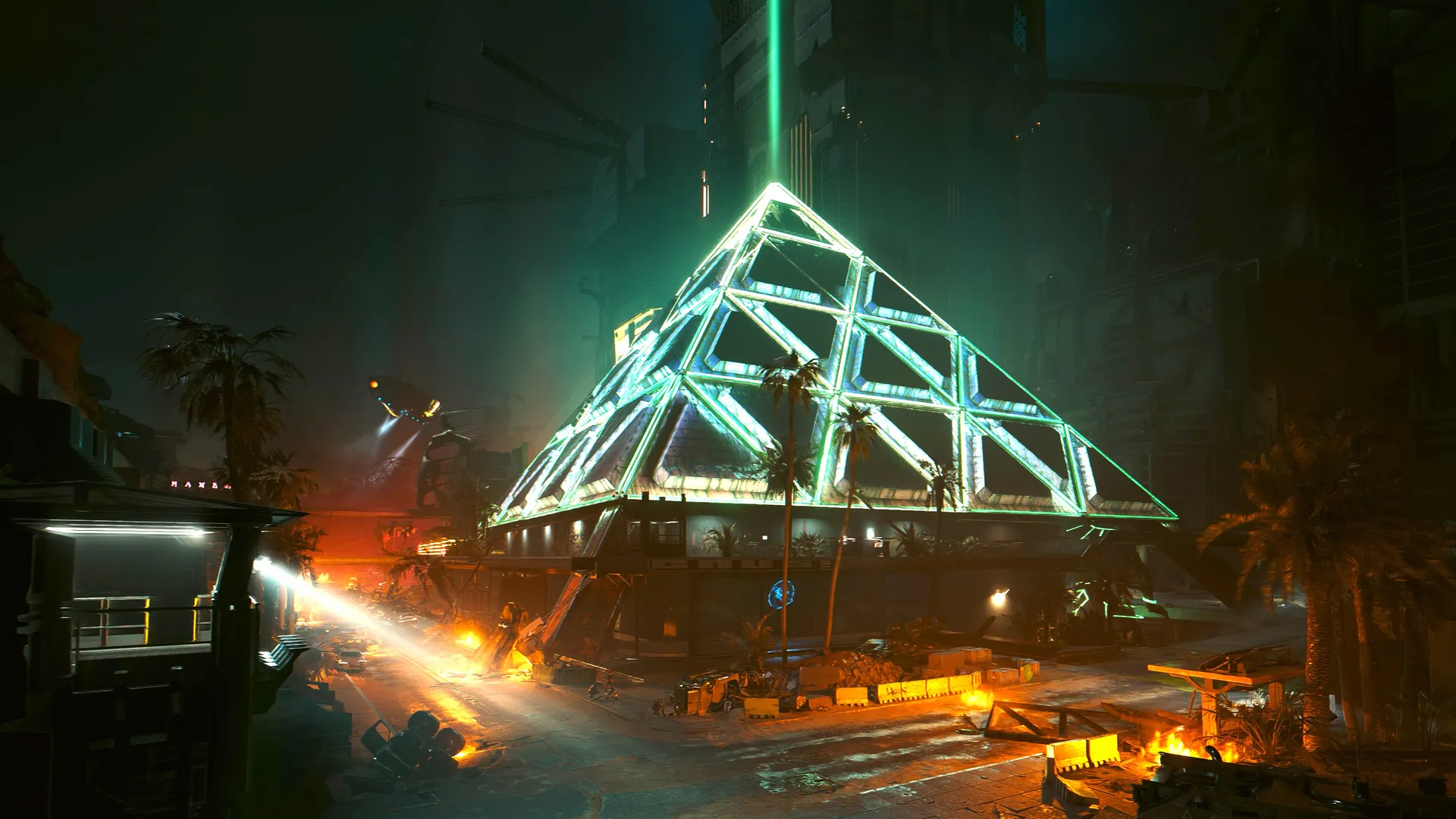Nvidia DLSS 3.5 looks game-changing for PC gaming across all RTX graphics cards
A new innovation

Nvidia has revealed DLSS 3.5 which looks to change the way that RTX functionality works on all supported graphics cards when it launches in the fall. The big innovation is Ray Reconstruction, which further utilizes a card’s Tensor cores to push AI to improve ray tracing performance. In brief, it should mean ray-traced games will look and play better - and you won’t necessarily have to shell out for one of the best graphics cards to benefit.
I’ve argued before that ray tracing isn’t worth the performance hit and that’s because of how demanding the real-time lighting technique is on hardware, but this narrative looks to be changing with DLSS 3.5. It all comes down to how Nvidia’s ray tracing has worked up until now, utilizing the simulated light rays combined with a de-noising algorithm and upscaling to deliver a balance between visual fidelity and performance. That changes with DLSS 3.5 as Ray Reconstruction replaces the old de-noising technology with an algorithm built to fill in the image gaps more effectively and efficiently.
Simply put, Ray Reconstruction is a new AI model built by Nvidia that actively learns from supported software to more accurately display rays the way that traditional denoisers do not. It means that you lose less overall image quality when upscaling the picture from a native resolution to a target one, such as going from 1440p to 2160p without the massive performance hit. However, while DLSS 3 was previously only available on the RTX 40-series, this new update means that all GPUs from the RTX 20-series (2018), 30-series (2020), and 40-series are supported. This further lends credence to the fact that DLSS is the true revolution in gaming and it’s only getting better.
Better ray tracing for everyone
The replacement of hand-tuned denoisers implemented by game developers with a specifically engineered AI model means ray tracing is overall faster than before. This is demonstrated by Nvidia in Alan Wake 2, one of the biggest upcoming games of the year when comparing DLSS 3 to DLSS 3.5 side-by-side. The latter software looks not only far more stable but also shows light in a faster and more meaningful way. This is evidenced in the clip where a flickering light emanates from the dark and cuts out, with the scene running quicker and more accurately. This coincides with the performance boost which jumps from around 35fps to 95fps when running natively to using the algorithm.
Another example is Cyberpunk 2077: Phantom Liberty. The DLSS 3.5 demonstration demonstrates not only improved framerates compared to older variants of the technology but also vastly improved ray tracing quality as well. Cyberpunk 2077 is a game that has been backed heavily by the company, as it was among the first to receive Ray Tracing Overdrive mode earlier this year. Now, however, where that mode brought Path Tracing (which also simulates refraction as well as reflection) to the game, this new innovation is all about efficiency combined with the visual spectacle. In short, the game will be able to use full ray tracing capabilities without sacrificing performance.
It’s ultimately a technology that looks to make some of the best RTX games play nicer with a wider range of Nvidia graphics cards. Yes, while the excellent RTX 4090 and stellar RTX 4070 Ti, as well as more of the best 4K graphics cards, will excel here, the fact that older RTX GPUs can take advantage is arguably more exciting. It means that you’ll still be able to use ray tracing and path tracing in demanding titles with more playable framerates if you’re rocking a slightly older GPU thanks to the reliance on multiple denoisers being replaced by a single AI model instead.
We can look at the benchmarks of how the previous generation of RTX graphics cards holds up. Cyberpunk 2077 running natively on an RTX 3060 Ti, one of the most popular GPUs still in use today (via Steam) performs at around 60fps in 1080p with DLSS and ray tracing enabled, and hovers around 50fps in 1440p (via Gaming Uploads). Playable, but not quite ideal, if the performance boosts of the demonstrations are to be believed, we should expect to see those numbers jump up a fair amount while simultaneously improving the quality of the ray tracing, too.
Get daily insight, inspiration and deals in your inbox
Sign up for breaking news, reviews, opinion, top tech deals, and more.
The major caveat here is support. DLSS 3.5 will be launching with the most intensive ray tracing games in mind first and will be implemented by other developers at a later date. It remains to be seen just how many games will get supported by Nvidia’s new AI learning model as it is best utilized for titles that really push the tech instead of those games that use RT shadows and ambient occlusion more passively. However, it remains a bold step in the right direction towards ensuring more people can enjoy the real-time rendering technique - and that can only be a good thing.
Get the best experience with Nvidia's DLSS 3.5 by utilizing one of the best gaming monitors which will pair well with one of the best gaming keyboards, the best gaming mouse, and one of the best PC controllers.

Formerly TechRadar Gaming's Hardware Editor, Aleksha McLoughlin is now a freelance writer and editor specializing in computing tech, video games, and E-commerce. As well as her many contributions to this site, you'll also find her work available on sister sites such as PC Gamer, GamesRadar, and Android Central. Additionally, more of her bylines can be found on Trusted Reviews, Dexerto, Expert Reviews, Techopedia, PC Guide, VideoGamer, and more.